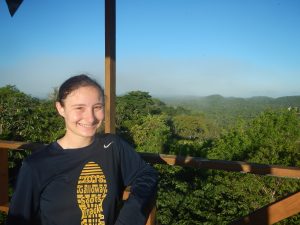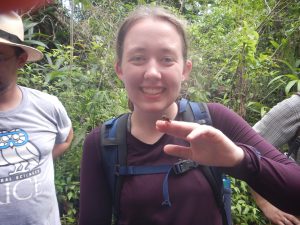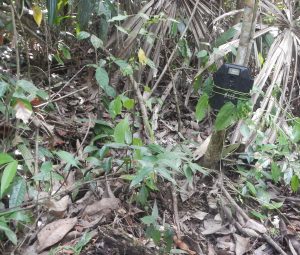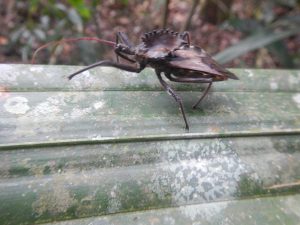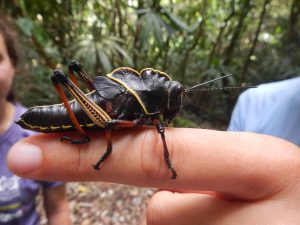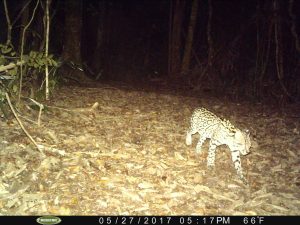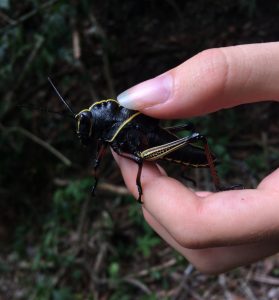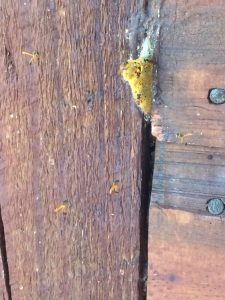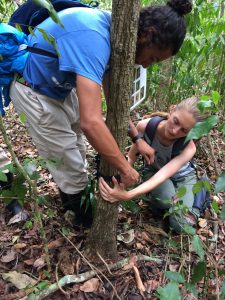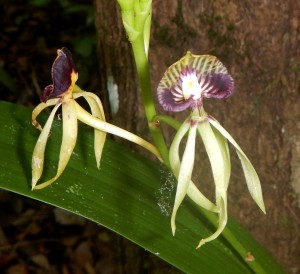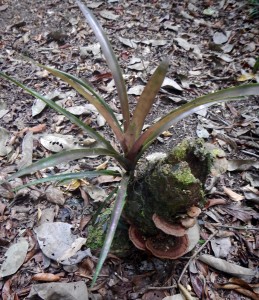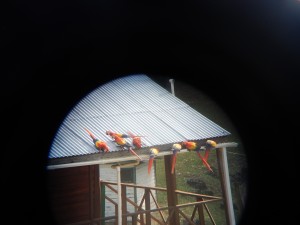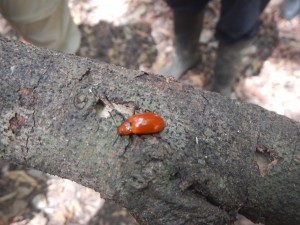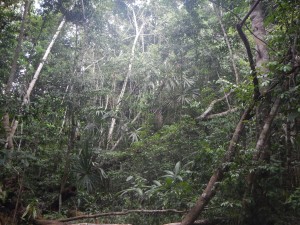Day 1 in the rainforest was fantastic! It started bright and early for some morning birdwatching, and I saw and heard so many of my taxa! I saw a lot of black vultures, which are large black birds that can be seen perched in groups in sparse trees. I saw a plumbeous kite, some oscillated turkeys, and some type of parrot. There are so many types of parrots that can be extremely difficult to tell apart, but I knew they were parrots because of their frantic style of flying. I also saw keel-billed toucans and collared aracaris! These are both large-billed birds that can be spotted gliding into tall trees. The most spectacular sighting of all was seeing scarlet macaws! There were two pairs of them in tall trees. I could tell that they were the Northern sub-species because they had a blue coloration on their wings, as well as yellow and the dominant red. These birds were breathtaking, and I am so happy to have gotten a picture!
We spent the rest of the day hiking to set up camera traps for an experiment pertaining to mammal functional groups and their abundance in certain areas of the forest (trails, roads, dense cover). We each had a camera trap to place, and it took the whole day to set them all up. During the setup for this experiment, I experienced so many things!
I held a butterfly net in my jungle outfit and felt like an Animal Crossing character!
I climbed up the bird observation tower! I didn’t see any birds clearly, but the view was unlike anything I’ve ever seen before.
I briefly went into a cave and saw Mayan pottery fragments and cave spiders!
I also ate termites (they tasted like carrots), saw a huge leaf cutter ant nest, and found red-eyed treefrog eggs!
Today was a long day, but it was packed with so many unbeatable moments and sights. I am excited to see what our cameras capture!
In the meantime, I can’t wait to go on more jungle adventures. However, I can’t say that I’m excited to put my rubber boots back on. Though my feet are in a state of achy torment, my thirst for exploration gives me plenty of inspiration to tough through the more difficult parts. What I do for science!
– McKenna

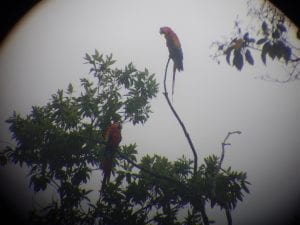
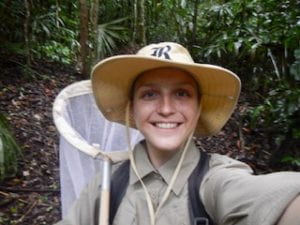

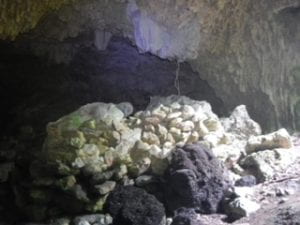
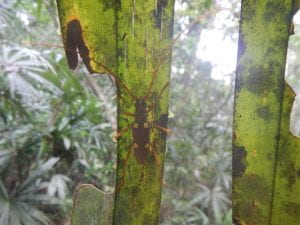


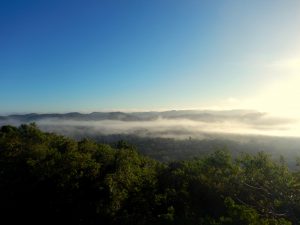 View from the top of Bird Tower.
View from the top of Bird Tower.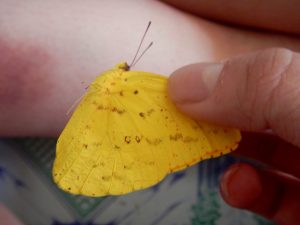
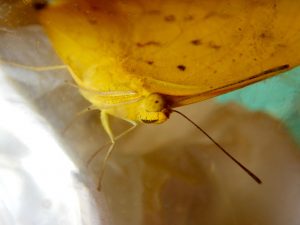
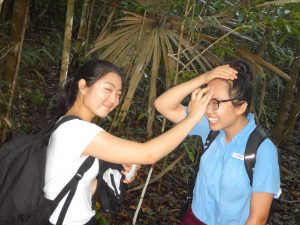 I got bitten by a mosquito right in the middle of my forehead as I was excavating the nest. Here’s Elena helping me put Cortisone on the largest bump in the history of ever.
I got bitten by a mosquito right in the middle of my forehead as I was excavating the nest. Here’s Elena helping me put Cortisone on the largest bump in the history of ever.
